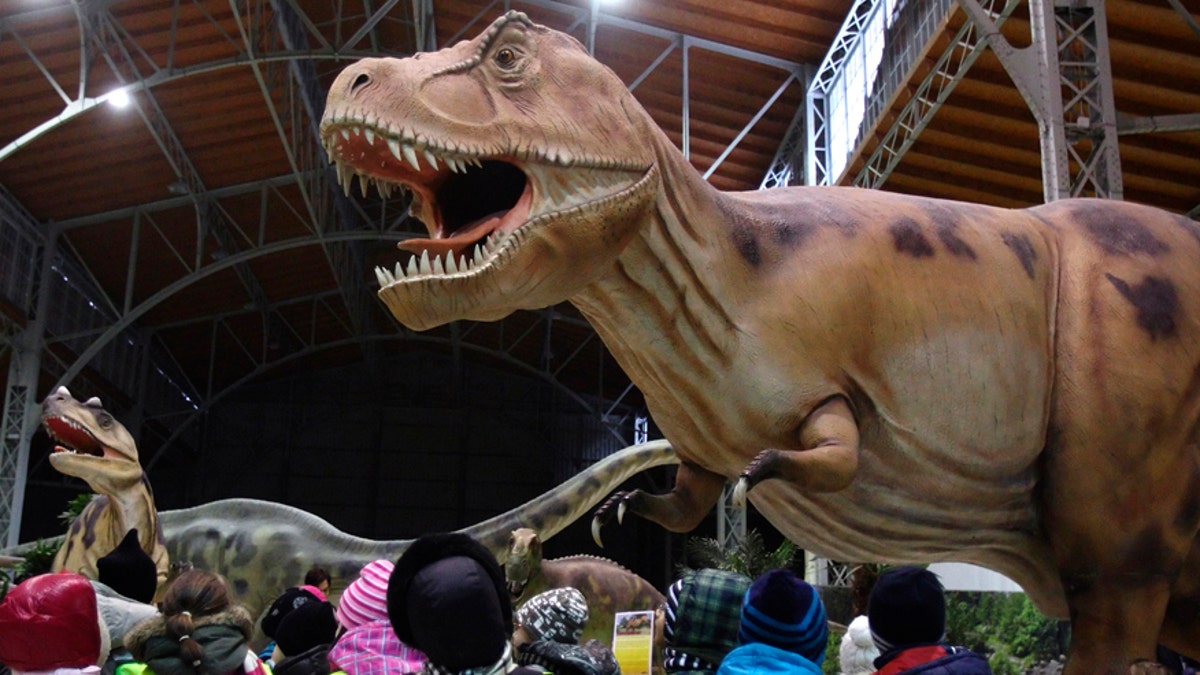
File photo - Children watch a life-sized Tyrannosaurus Rex dinosaur model in Vienna Feb. 7, 2014. (REUTERS/Heinz-Peter Bader)
The fossils may be in such poor shape that scientists are calling them "crap," but the 75-million-year-old fragments are golden in another sense. A theropod claw, triceratops-like toe bone, and duck-billed dinosaur limb and ankle bones first unearthed in Canada 100 years ago appear to retain soft tissue, including red blood cells and collagen, scientists report this week in the journal Nature Communications.
This means countless other fossils around the world may as well, possibly helping solve age-old questions about dinosaur evolution, physiology, and so forth. It even raises the chance that at least trace DNA may survive as well.
"One morning, I turned on the microscope, increased the magnification, and thought, 'Wait, that looks like blood!'" a materials scientist at Imperial College London tells the Guardian.
Though this isn't the first time soft tissue appears to have been found in a fossil—a North Carolina State University researcher found collagen in a T.
rex leg in 2005—this marks the first time it's survived in fossils that "are crap, very fragmentary ... not the sorts of fossils you'd expect to have soft tissue," a paleontologist at Imperial says.
The discovery was made using electron microscope techniques, and though the scientists are still working to verify their findings, they're hopeful that traces of soft tissue in ancient fossils is the norm, not the exception, and that even dino DNA, however fragmented, may survive as well.
(Check out what was on the menu for this 95-million-year-old dinosaur.)
This article originally appeared on Newser: In 'Crap' Dinosaur Fossils, Scientists Strike Gold
More From Newser




















